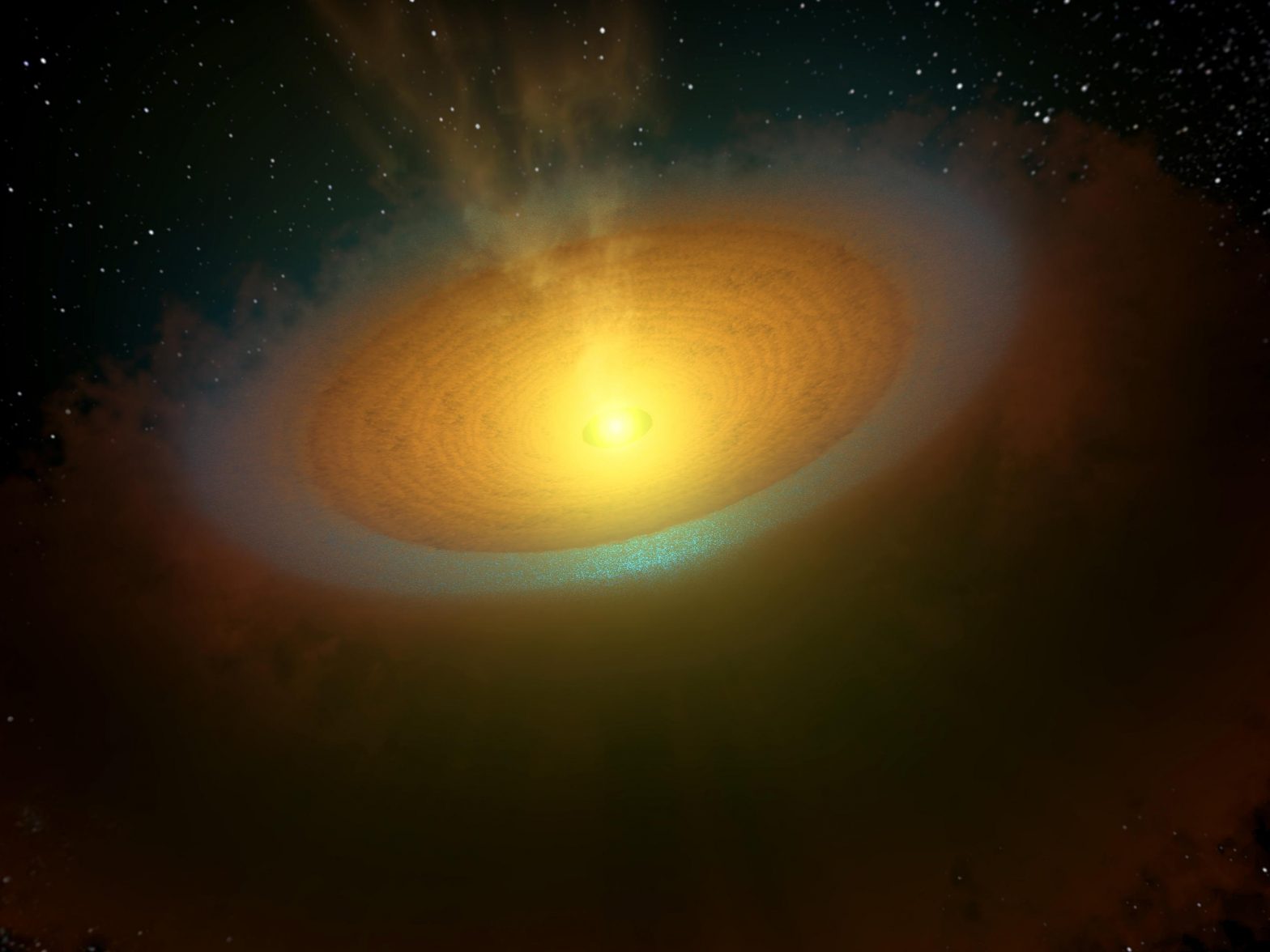| Basic Information | |
| What is this? | An artist’s impression of the disc of material around the star TW Hydrae |
| Where is it in the sky? | In the constellation of Hydra the water snake |
| How big is it? | The star itself is smaller than the Sun, being around two thirds the mass, but the disc of material reaches hundreds of times further than the distance fo the Earth from the Sun |
| How far away is it? | The star is around 175 light years away |
| What do the colours represent? | In the inset image, the coloured lines represent the detection of water spinning in different ways, indicating where it formed in the disc of material. |
Downloads
See this object in:
TW Hydrae is a star around 175 light years away in the constellation of Hydra the water snake. At only around 10 million years old it is very youthful compared with our Sun, which is several billion years old. It is still surrounded by a disc of gas and dust, which over the next few tens or hundreds of millions of years should form planets.
The disc contains dust in the form of small grains, and also water ice. The ice is very hard to detect, but some of it is turned into gas by intense ultraviolet light from nearby stars. The resulting water vapour can be detected by the HIFI instrument onboard Herschel, which allows astronomers to deduce its temperature and therefore its distance from the star. Some of the water vapour detected is very cold, sitting below 100 Kelvin (-170 Celsius), which means it must lie at considerable distances from the star.
Only a tiny amount of the water is found in the form of vapour, with most of it locked up as ice, but finding the signature at such large distances means that water ice is present throughout the outer regions of the disc of material. Although the signature is weaker than was expectyed, the amount of water that must be present is equivalent to thousands of times the amount found in the Earth’s oceans. Water is important for helping grains of dust stick together, forming asteroids and comets. Some of these will collide, eventually forming planets like the Earth, and so by studying TW Hydrae we are looking at something similar to the earliest stages of our own Solar System.
The HIFI instrument is able to detect the way the molecules are moving, particularly their rotation. The details of the ways in which they are rotating, called “ortho” and “para” modes indicates the temperature at which the ice grains formed. and provides evidence that the innner and outer regions of the Solar System are continually mixed together. These results from TW Hydrae indicate that watery planets like Earth may be relatively common.


